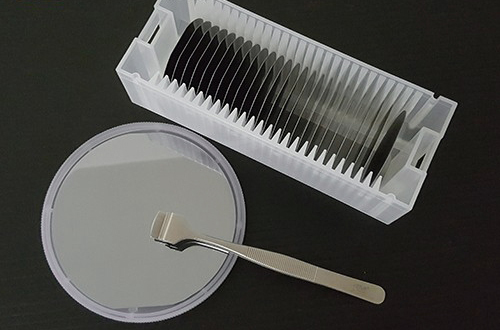Indium phosphide (InP) wafers are at the forefront of technological innovation, serving as a foundational element in several cutting-edge applications. Known for their excellent electronic and optoelectronic properties, InP wafers are instrumental in advancing industries from automotive to telecommunications and energy. Here, we explore the diverse applications of Indium phosphide wafers, demonstrating their crucial role in modern technology.
Optoelectronic Components
Indium phosphide wafers are pivotal in the development of optoelectronic components, particularly in the realm of terahertz technology. This application is incredibly beneficial in ultra-sensitive spectroscopic analyzers used to measure the thickness of polymers and detect multilayer coatings. These capabilities are extensively utilized in the automotive industry, enhancing the precision and reliability of vehicle manufacturing processes.
High-Speed Electronics
In the domain of electronics, InP wafers are synonymous with speed and efficiency. They are essential in creating the fastest semiconductor devices currently available. Devices such as High Electron Mobility Transistors (HEMTs) and Heterostructure Bipolar Transistors (HBTs) rely on InP for their operations. The high-speed capabilities of microelectronics developed on InP make them indispensable in sectors where rapid data processing and transmission are required, such as telecommunications and advanced computing.
Photovoltaics
Indium phosphide also plays a transformative role in the energy sector, particularly in solar power technology. Photovoltaic cells made with InP substrates are among the most efficient, with performance capabilities reaching up to 46% efficiency. The key to this high efficiency is InP’s optimal bandgap combination, which allows for effective conversion of solar radiation into electrical energy. The unique lattice constant of InP is ideal for growing low bandgap materials with high crystalline quality, critical for high-performance solar cells.
Photonic Integrated Circuits
Beyond these applications, InP is also a crucial material in the manufacturing of photonic integrated circuits (PICs). These circuits integrate active laser generation, amplification, control, and detection, all on a single chip. The properties of InP make it excellent for these functions, which are essential in communication and sensing technologies. Photonic integrated circuits based on InP are fundamental in pushing the boundaries of optical communication, including fiber optics and laser technologies.
Unlocking the Terahertz Range
Indium phosphide-based components have the unique ability to unlock the terahertz zone of the electromagnetic spectrum, which lies between infrared and microwaves. This part of the spectrum is significant for its hybrid properties, combining high-frequency and high-optical qualities, which are promising for future applications in imaging, sensing, and wireless communications.
Conclusion
The versatility and superior properties of Indium phosphide wafers make them a cornerstone in multiple high-tech applications across various industries. From enhancing the efficiency of solar panels to enabling high-speed electronics and advancing optical communications, InP wafers continue to be integral to the evolution of technology. As research progresses and the potential applications of this material expand, InP may soon play a part in even more revolutionary technologies.
For high-quality InP wafer or other crystal substrates, please visit https://www.sputtertargets.net/product-category/crystal-substrates/.


One thought on “Indium Phosphide Wafer Applications: Revolutionizing Technology Across Fields”